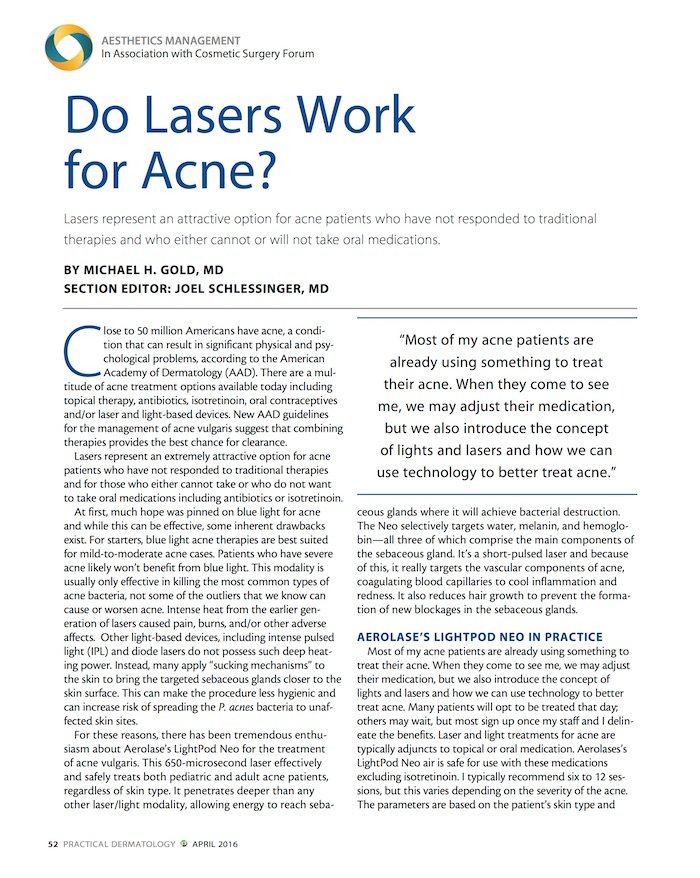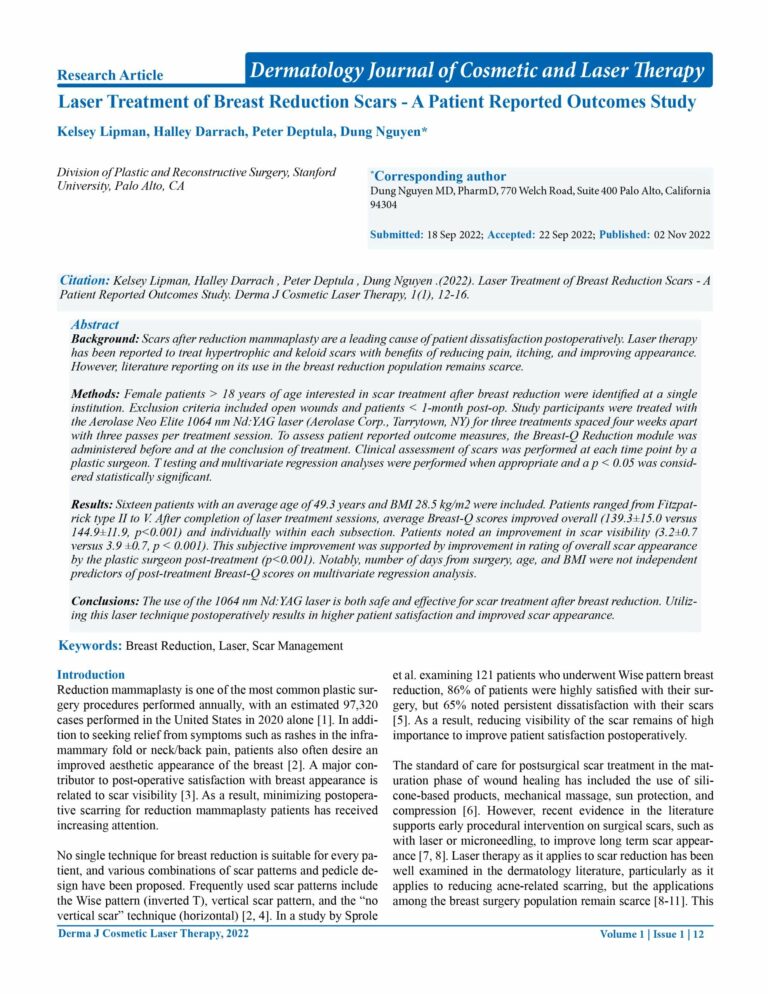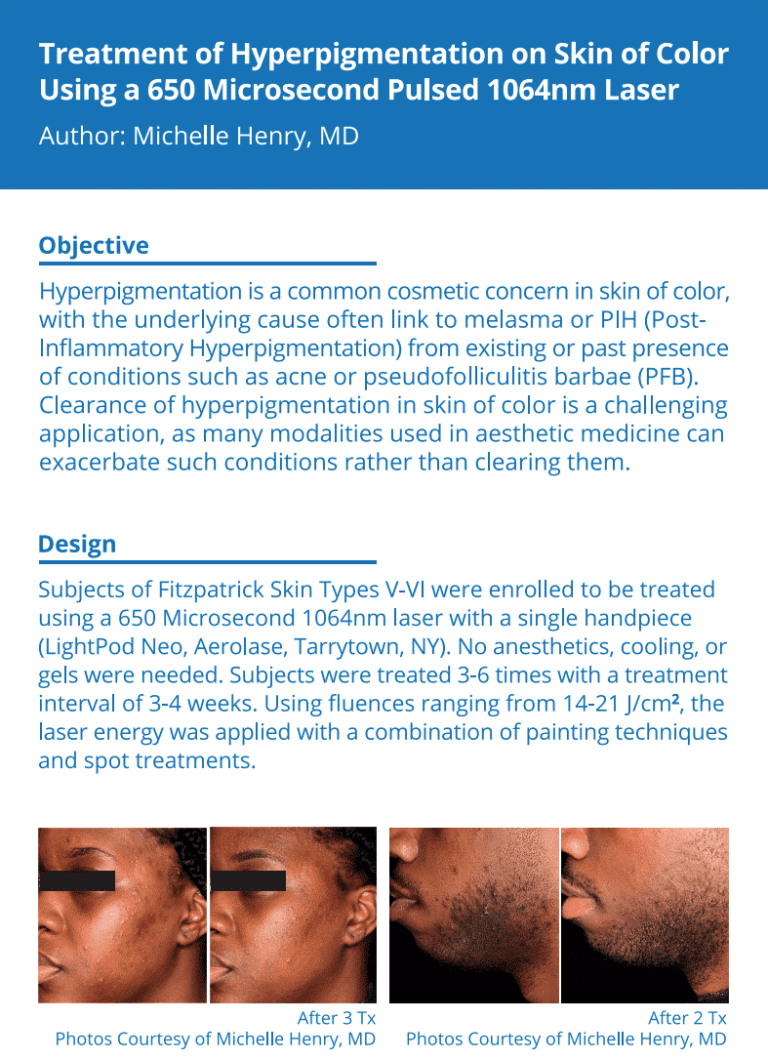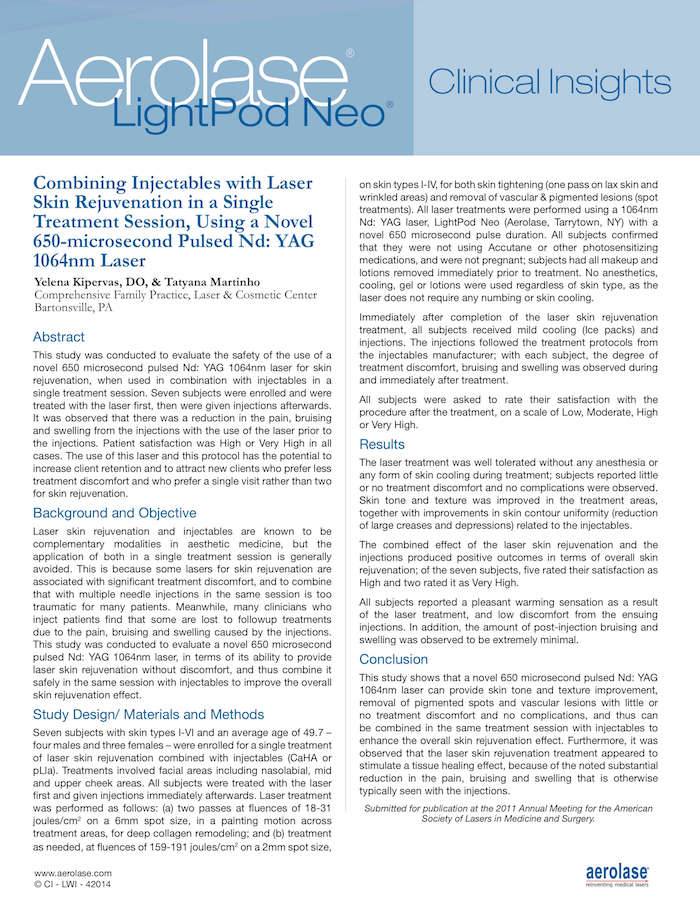Michael Gold, MD, Gold Skin Care, Nashville, TN; Published in Practical Dermatology Vol. 13, No. 4 April 2016
Close to 50 million Americans have acne, a condition that can result in significant physical and psychological problems, according to the American Academy of Dermatology (AAD). There are a multitude of acne treatment options available today including topical therapy, antibiotics, isotretinoin, oral contraceptives and/or laser and light-based devices. New AAD guidelines for the management of acne vulgaris suggest that combining therapies provides the best chance for clearance.
Lasers represent an extremely attractive option for acne patients who have not responded to traditional therapies and for those who either cannot take or who do not want to take oral medications including antibiotics or isotretinoin.
At first, much hope was pinned on blue light for acne and while this can be effective, some inherent drawbacks exist. For starters, blue light acne therapies are best suited for mild-to-moderate acne cases. Patients who have severe acne likely won’t benefit from blue light. This modality is usually only effective in killing the most common types of acne bacteria, not some of the outliers that we know can cause or worsen acne. Intense heat from the earlier generation of lasers caused pain, burns, and/or other adverse affects. Other light-based devices, including intense pulsed light (IPL) and diode lasers do not possess such deep heating power. Instead, many apply “sucking mechanisms” to the skin to bring the targeted sebaceous glands closer to the skin surface. This can make the procedure less hygienic and can increase risk of spreading the P. acnes bacteria to unaffected skin sites.
For these reasons, there has been tremendous enthusiasm about Aerolase’s Neo for the treatment of acne vulgaris. This 650-microsecond laser effectively and safely treats both pediatric and adult acne patients, regardless of skin type. It penetrates deeper than any other laser/light modality, allowing energy to reach sebaceous glands where it will achieve bacterial destruction. The Neo selectively targets water, melanin, and hemoglobin—all three of which comprise the main components of the sebaceous gland. It’s a short-pulsed laser and because of this, it really targets the vascular components of acne, coagulating blood capillaries to cool inflammation and redness. It also reduces hair growth to prevent the formation of new blockages in the sebaceous glands.




